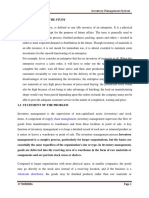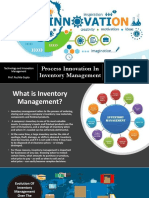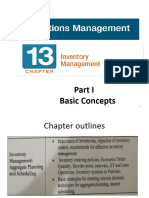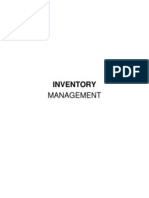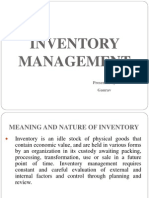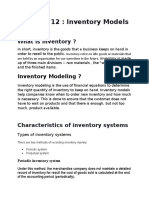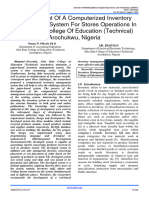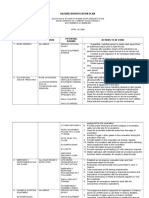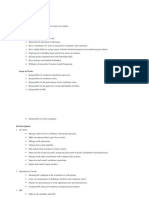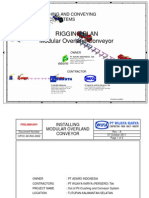0% found this document useful (0 votes)
94 views6 pagesInventory Control Systems Guide
The document discusses inventory control systems. It defines an inventory control system as a technology used to maintain counts and supervise a company's inventory throughout the supply chain. It allows for integration and management of sourcing, shipping, distribution, storage and returns. There are two main types of inventory control systems - perpetual systems which provide real-time tracking, and periodic systems which require physical counts at set times. Barcode and RFID systems can be used with inventory control systems to further enhance accuracy and tracking of inventory movement. Key benefits of inventory control systems include maintaining optimal inventory levels, streamlining logistical processes, reducing costs, and increasing customer satisfaction.
Uploaded by
Islam GayaCopyright
© © All Rights Reserved
We take content rights seriously. If you suspect this is your content, claim it here.
Available Formats
Download as DOCX, PDF, TXT or read online on Scribd
0% found this document useful (0 votes)
94 views6 pagesInventory Control Systems Guide
The document discusses inventory control systems. It defines an inventory control system as a technology used to maintain counts and supervise a company's inventory throughout the supply chain. It allows for integration and management of sourcing, shipping, distribution, storage and returns. There are two main types of inventory control systems - perpetual systems which provide real-time tracking, and periodic systems which require physical counts at set times. Barcode and RFID systems can be used with inventory control systems to further enhance accuracy and tracking of inventory movement. Key benefits of inventory control systems include maintaining optimal inventory levels, streamlining logistical processes, reducing costs, and increasing customer satisfaction.
Uploaded by
Islam GayaCopyright
© © All Rights Reserved
We take content rights seriously. If you suspect this is your content, claim it here.
Available Formats
Download as DOCX, PDF, TXT or read online on Scribd
/ 6








